Nerf Modding 101: Recon CS-6
by SnakesOfDeath in Outside > Launchers
205131 Views, 61 Favorites, 0 Comments
Nerf Modding 101: Recon CS-6
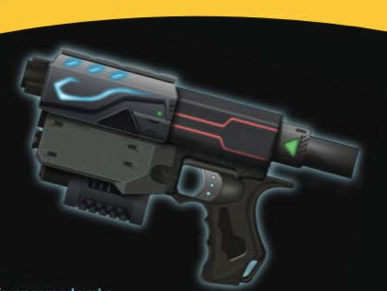
Today I am going the show you how to do basic all-around beginner--intermediate modifications in the Nerf Recon CS-6
Warning: If performed incorrectly, modifications can reduce performance or render the blaster inoperable. When performing even basic mods, there is always a risk of losing parts, cracking plastic, or not being able to re-assemble the blaster. Some of the more common blasters' internal pictures can be found online, and it is worthwhile to use these as references.
When performing cosmetic mods, care must be taken in order to not lock up any moving parts. Without a few layers of a hard clear coat, paint can gum up areas where plastic slides on plastic. For more complex mods like barrel replacement and fabrication of sealed breech, you must take into consideration the volume of the plunger tube in relation to the barrel length, and spring power must also be increased. So make sure you know what you are getting yourself into before you start a mod.
Credit for and information in this 'ible was originally created, published, and copyrighted by Orange Mod Works™
Warning: If performed incorrectly, modifications can reduce performance or render the blaster inoperable. When performing even basic mods, there is always a risk of losing parts, cracking plastic, or not being able to re-assemble the blaster. Some of the more common blasters' internal pictures can be found online, and it is worthwhile to use these as references.
When performing cosmetic mods, care must be taken in order to not lock up any moving parts. Without a few layers of a hard clear coat, paint can gum up areas where plastic slides on plastic. For more complex mods like barrel replacement and fabrication of sealed breech, you must take into consideration the volume of the plunger tube in relation to the barrel length, and spring power must also be increased. So make sure you know what you are getting yourself into before you start a mod.
Credit for and information in this 'ible was originally created, published, and copyrighted by Orange Mod Works™
Introduction
In the first part of this 'ible I will show you how to do some mods for beginner modders, people who are doing something like this for the first time.
What is a Mod?
A modification or “mod” is anything you do to your blaster that changes its looks, form, or functionality. Doing a custom paint job, adding your own accessories and parts, and working on the internals to increase power are all considered mods.
Why Mod?
There are a plethora of reasons to mod a blaster:
• A modded blaster is a great addition to a costume.
• A blaster that you mod becomes your own work of art.
• A modded blaster can shoot further and with more intensity compared to FOF (fresh out of factory) blasters. It can give you the upper hand in your next battle.
• Cosmetic modding, when done right, yields stunning results. A humble foam blaster can become anything from a dystopian “steampunk” gun to a clean cut weapon right out of science fiction. They can even mimic weapons out of video games and movies.
Regardless of the reason, modding is an incredibly fun hobby that creates custom works of art out of average foam blasters.
What is a Mod?
A modification or “mod” is anything you do to your blaster that changes its looks, form, or functionality. Doing a custom paint job, adding your own accessories and parts, and working on the internals to increase power are all considered mods.
Why Mod?
There are a plethora of reasons to mod a blaster:
• A modded blaster is a great addition to a costume.
• A blaster that you mod becomes your own work of art.
• A modded blaster can shoot further and with more intensity compared to FOF (fresh out of factory) blasters. It can give you the upper hand in your next battle.
• Cosmetic modding, when done right, yields stunning results. A humble foam blaster can become anything from a dystopian “steampunk” gun to a clean cut weapon right out of science fiction. They can even mimic weapons out of video games and movies.
Regardless of the reason, modding is an incredibly fun hobby that creates custom works of art out of average foam blasters.
Chapter 1: Opening the Blaster
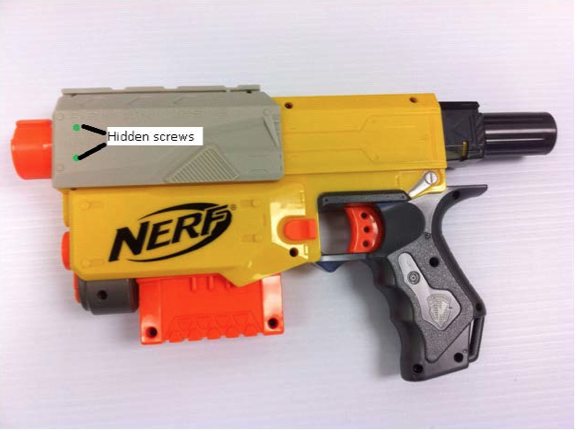
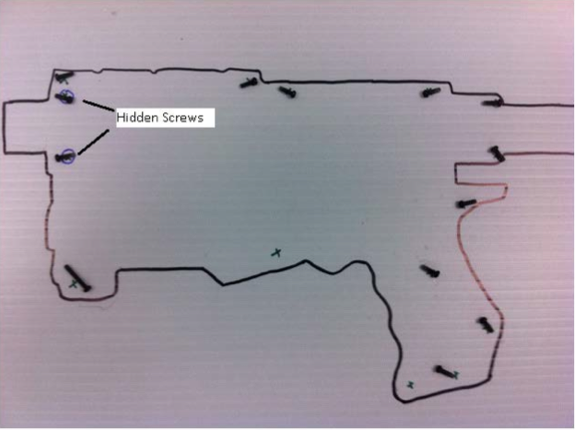
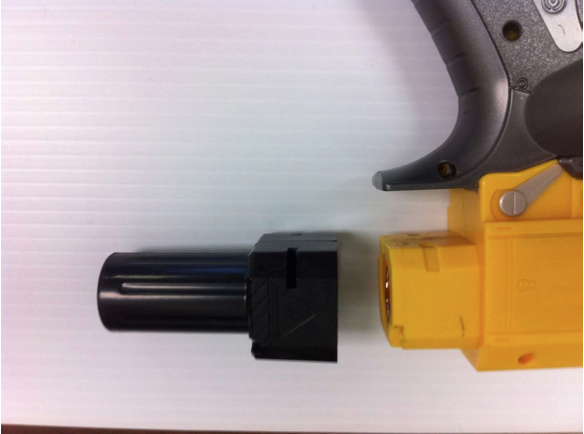
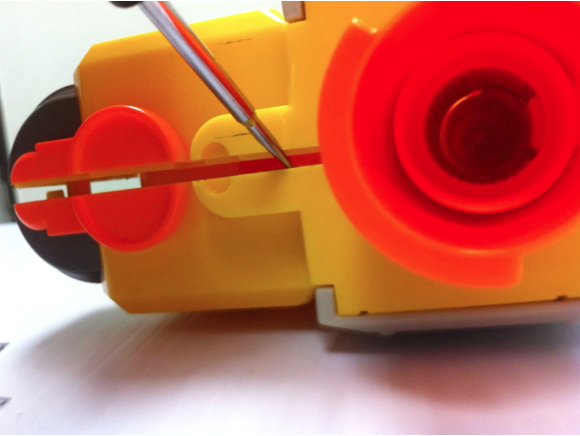
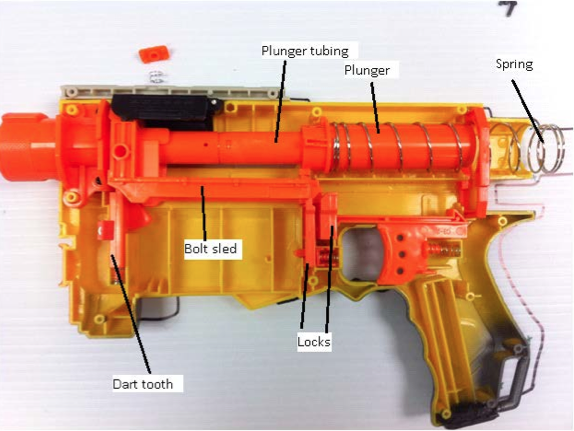
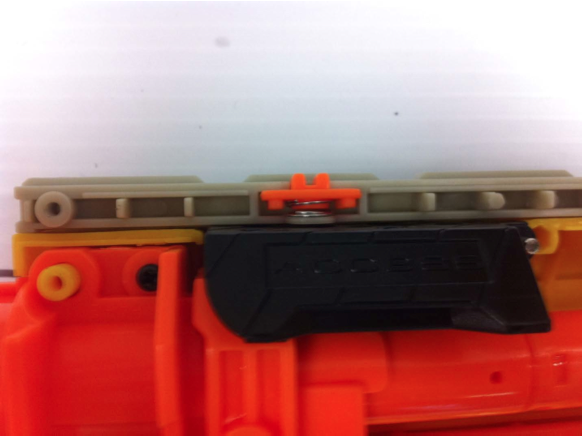
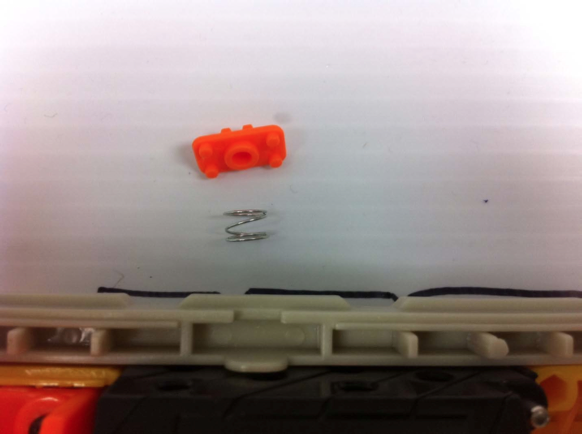
It is important to be familiar with your blaster’s internal structure in order to carry out any performance-related modifications. Be sure to remember what size screws go where, and make sure no small springs shoot out when the blaster is opened. The blaster should be unloaded with the mainspring relaxed. Try to avoid opening the blaster when it is in the cocked position.
Supplies Needed:
• #1 Phillips Head Screwdriver
• Small Flat Head Screwdriver
Step 1: Set Blaster on a clear workspace with the screws facing you. (Pic. 1)
Step 2: Remove screws. Be sure to make note of each screw's placement, because sizes differ. It is helpful to place the screws on the table in their original positions relevant to an outline of the blaster. There are a total of 15 screws. (Pic. 2)
Step 3: Gently remove the rear cap of the blaster. Be sure you do not accidentally leave your blaster in cocked position, because the spring could shoot out and cause injury. (Pic. 3)
Step 4: At this point, the blaster should easily separate into two halves. If it appears to be sticking, double check to make sure that all the screws have been removed. If the issue continues, use a flat head screwdriver and gently pry around the seam until the blaster separates. (Pic. 4)
Step 5: Set the top half aside, and you should have something that looks like this: (Pic. 5)
Tip: Make sure you do not lose the accessory tooth, which is located inside of the cocking handle. (Pic. 6-7)
Supplies Needed:
• #1 Phillips Head Screwdriver
• Small Flat Head Screwdriver
Step 1: Set Blaster on a clear workspace with the screws facing you. (Pic. 1)
Step 2: Remove screws. Be sure to make note of each screw's placement, because sizes differ. It is helpful to place the screws on the table in their original positions relevant to an outline of the blaster. There are a total of 15 screws. (Pic. 2)
Step 3: Gently remove the rear cap of the blaster. Be sure you do not accidentally leave your blaster in cocked position, because the spring could shoot out and cause injury. (Pic. 3)
Step 4: At this point, the blaster should easily separate into two halves. If it appears to be sticking, double check to make sure that all the screws have been removed. If the issue continues, use a flat head screwdriver and gently pry around the seam until the blaster separates. (Pic. 4)
Step 5: Set the top half aside, and you should have something that looks like this: (Pic. 5)
Tip: Make sure you do not lose the accessory tooth, which is located inside of the cocking handle. (Pic. 6-7)
Chapter 2: Removing the Locks
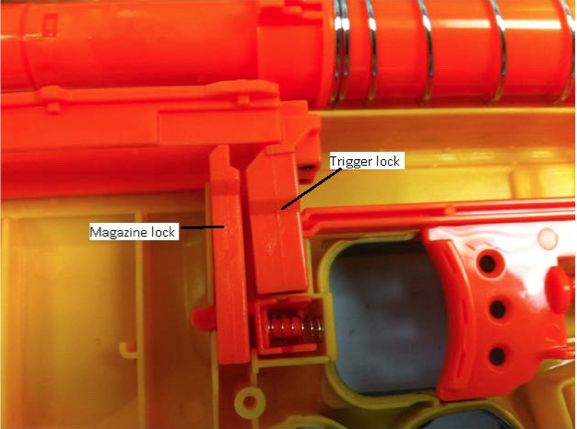
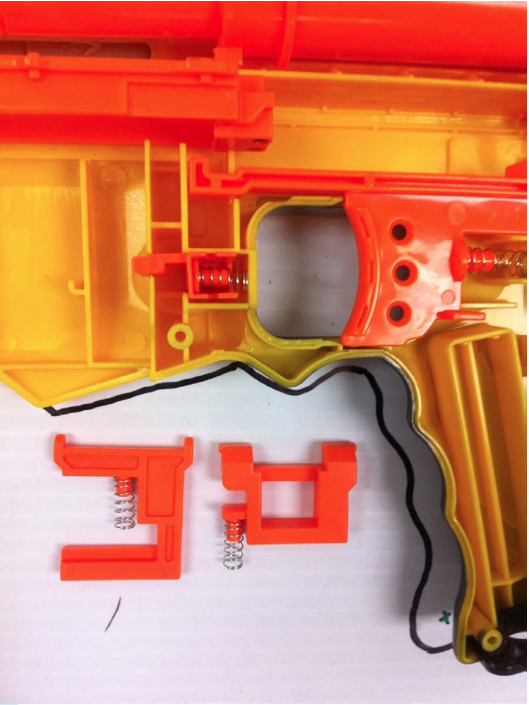
Locks allow you to half-cock your blaster, and are there to ensure that the slide is racked to the most rearward position before trigger is pulled. Many modders prefer to remove these locks in order to control blaster function precisely to their liking.
Because most blasters are rated safe for children as young as 6 years old, the locks are designed with them in mind. If you are mature enough to be attempting to mod your blaster, odds are that you do not need the locks. However, if you prefer, they can be left in the blaster.
Supplies Needed:
• None
Step 1: Locate locks. (Pic. 1)
The magazine lock prevents the magazine from being removed unless the slide is pulled all the way back.
The trigger lock prevents you from pulling the trigger while the bolt sled is pulled back.
Step 2: Gently work the locks out of their slots. Be careful not to lose the magazine lock spring or trigger spring. (Pic. 2)
The locks can be thrown away at this point, but it's a good idea to hold onto the springs because they can be used as replacement trigger lock springs in the event that the original spring becomes lost or damaged.
Because most blasters are rated safe for children as young as 6 years old, the locks are designed with them in mind. If you are mature enough to be attempting to mod your blaster, odds are that you do not need the locks. However, if you prefer, they can be left in the blaster.
Supplies Needed:
• None
Step 1: Locate locks. (Pic. 1)
The magazine lock prevents the magazine from being removed unless the slide is pulled all the way back.
The trigger lock prevents you from pulling the trigger while the bolt sled is pulled back.
Step 2: Gently work the locks out of their slots. Be careful not to lose the magazine lock spring or trigger spring. (Pic. 2)
The locks can be thrown away at this point, but it's a good idea to hold onto the springs because they can be used as replacement trigger lock springs in the event that the original spring becomes lost or damaged.
Chapter 3: Air Restrictor Removal
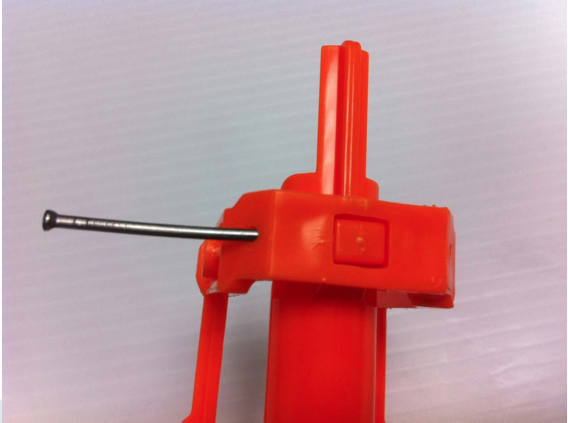
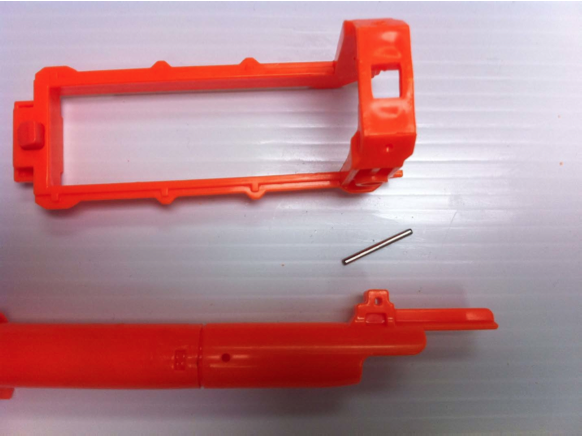
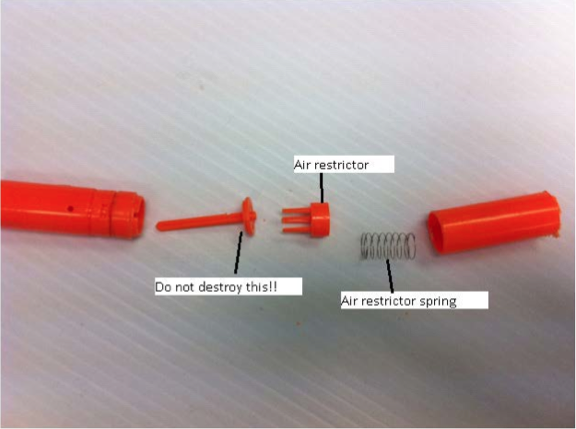
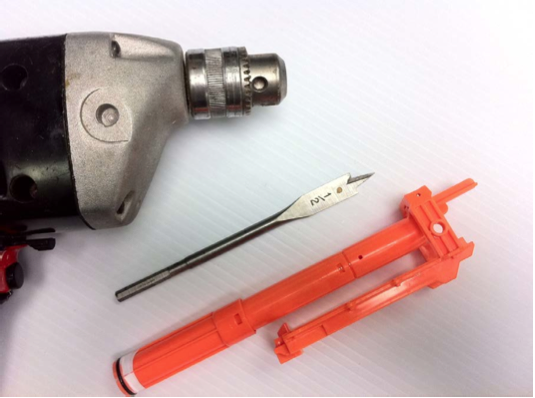
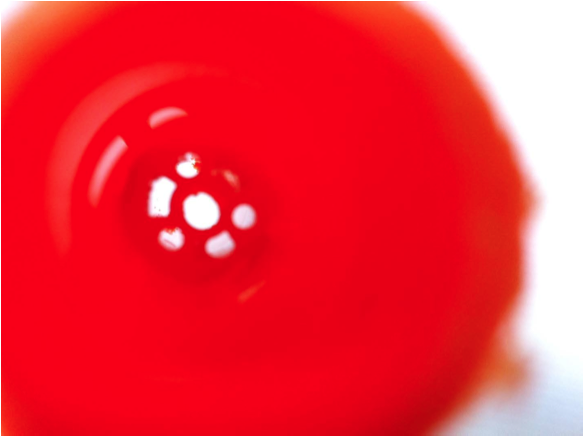
Here is where the modifications start becoming more challenging. So be careful.
The air restrictor (AR) slows down the flow of air from the plunger to the dart. This device serves to reduce the blaster's power and prevent the plunger from slamming into the plunger tubing at full speed, drastically reducing the noise generated during firing.
Note: Some of the plunger tubing pictured below has been cut out of the plunger for demonstration purposes. Do not do this EVER.
Supplies Needed:
• Nail or small screwdriver or punch
• Drill
• 1⁄2 inch spade bit or long 5/32 or 1/8 inch drill bit
• Needle nose pliers
• Gloves
Step 1: Remove the bolt sled and plunger from the blaster. Unpin the plunger assembly from the bolt sled using a nail, small screwdriver, or punch. You can do this by inserting the nail, screwdriver, or punch into the hole that houses the retention pin and apply pressure. (Pic. 1-2)
Tip: Before we move on, it's important to understand which parts of the tubing assembly are ok to hit with the drill and which are not. If you shake the plunger tube, you should hear some parts rattling around. The follow picture shows exactly what's inside the plunger tube: (Pic. 3)
Step 2: Use gloves to hold the plunger tube and drill from the end that has the O-ring. It will take considerable pressure to get the bit to catch the plastic. Wearing a glove will prevent you from suffering a burn on your hand, should the bit catch the tubing and start to spin. (Pic. 4)
As you drill, pause every so often to check your progress. When the spring and the three-pronged plastic piece has been drilled enough to fall free of the tubing, It's time to use the drill bit's sharp point to remove the post.
Step 3: Carefully drill through the center of the remaining plastic piece until the post falls free. If you think the bit has gone far enough, but the post is still hanging, use needle nose pliers to work it free.
The air restrictor (AR) slows down the flow of air from the plunger to the dart. This device serves to reduce the blaster's power and prevent the plunger from slamming into the plunger tubing at full speed, drastically reducing the noise generated during firing.
Note: Some of the plunger tubing pictured below has been cut out of the plunger for demonstration purposes. Do not do this EVER.
Supplies Needed:
• Nail or small screwdriver or punch
• Drill
• 1⁄2 inch spade bit or long 5/32 or 1/8 inch drill bit
• Needle nose pliers
• Gloves
Step 1: Remove the bolt sled and plunger from the blaster. Unpin the plunger assembly from the bolt sled using a nail, small screwdriver, or punch. You can do this by inserting the nail, screwdriver, or punch into the hole that houses the retention pin and apply pressure. (Pic. 1-2)
Tip: Before we move on, it's important to understand which parts of the tubing assembly are ok to hit with the drill and which are not. If you shake the plunger tube, you should hear some parts rattling around. The follow picture shows exactly what's inside the plunger tube: (Pic. 3)
Step 2: Use gloves to hold the plunger tube and drill from the end that has the O-ring. It will take considerable pressure to get the bit to catch the plastic. Wearing a glove will prevent you from suffering a burn on your hand, should the bit catch the tubing and start to spin. (Pic. 4)
As you drill, pause every so often to check your progress. When the spring and the three-pronged plastic piece has been drilled enough to fall free of the tubing, It's time to use the drill bit's sharp point to remove the post.
Step 3: Carefully drill through the center of the remaining plastic piece until the post falls free. If you think the bit has gone far enough, but the post is still hanging, use needle nose pliers to work it free.
Chapter 4: Air Release Hole Mod
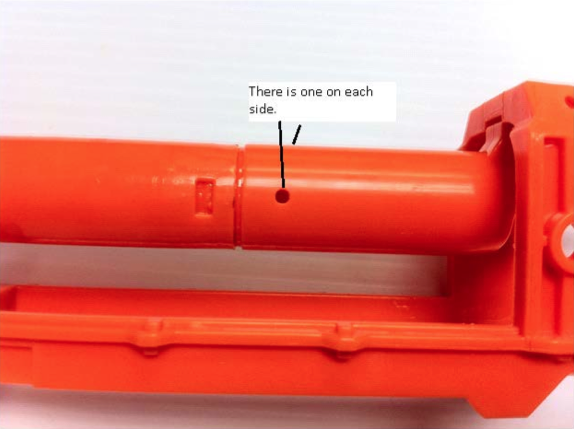
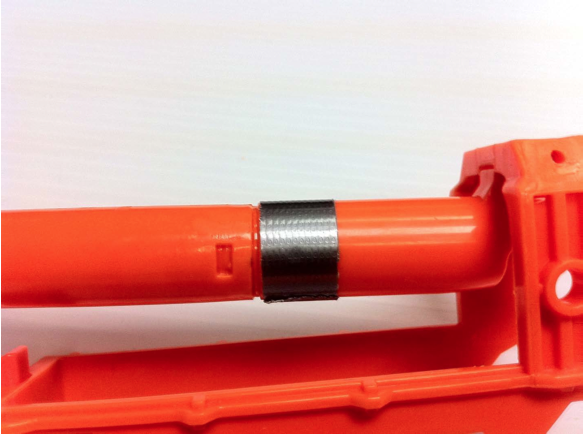
Supplies needed:
• Duct tape, electrical tape, or glue
Step 1: Locate the air release hold on the plunger tubing.
Step 2: Tape around the plunger tubing to seal the holes. If you're using glue, make sure no excess glue drips into the plunger, as this may cause the blaster to not fire properly.
Now re-pin the plunger to the bolt sled and you’re done!
• Duct tape, electrical tape, or glue
Step 1: Locate the air release hold on the plunger tubing.
Step 2: Tape around the plunger tubing to seal the holes. If you're using glue, make sure no excess glue drips into the plunger, as this may cause the blaster to not fire properly.
Now re-pin the plunger to the bolt sled and you’re done!
Chapter 5: Modifing the Plunger O-ring
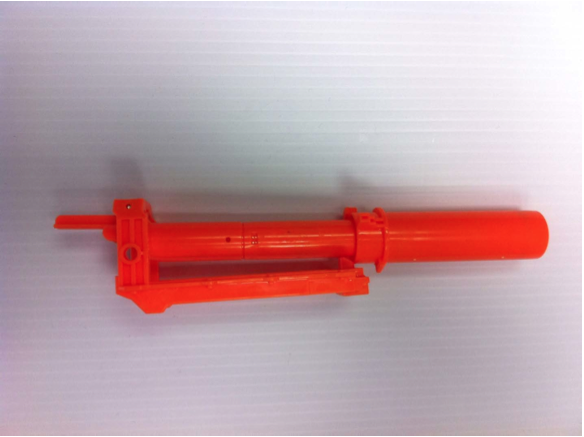
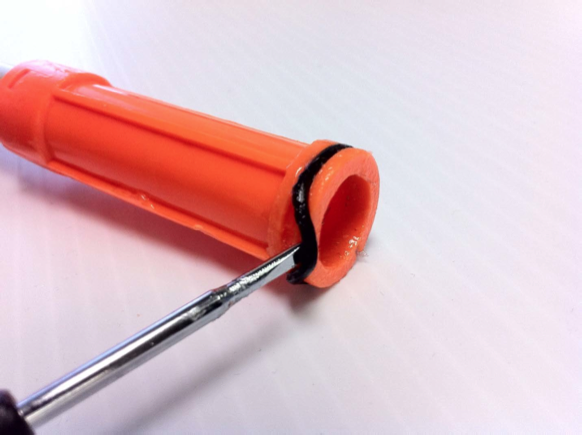
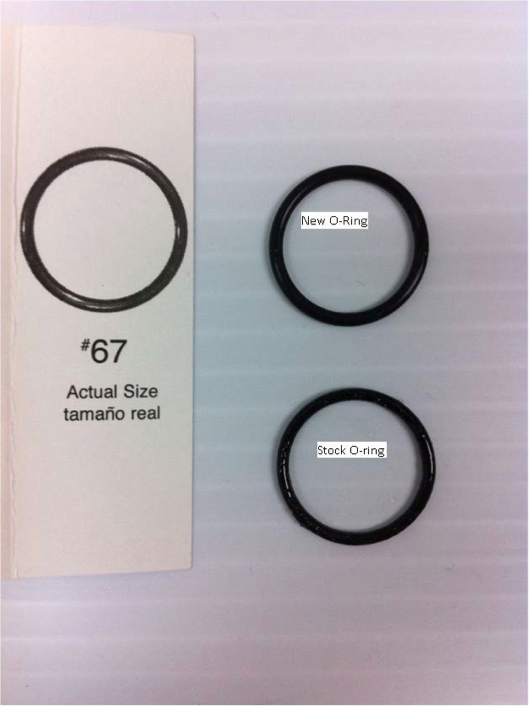
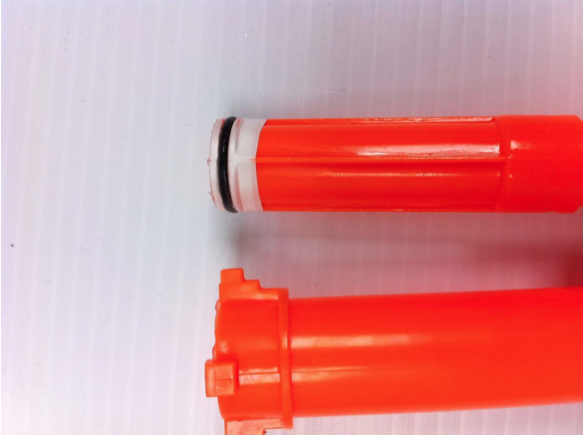
The O-ring seal on the plunger tubing makes sure that the air compressed by the plunger assembly and spring does not leak out during compression. Some blasters come with an excellent O-ring seal, while others come with undersized or loose O-rings. Improving this seal is an easy mod that can add a few extra feet to your shots.
Supplies Needed: (click the links to view recommended products)
• Small flat head screwdriver• O-ring safe lubricant, such as petroleum jelly or silicon based lubricant
• #67 O-ring (method 1)
• Teflon tape or electrical tape (method 2)
Caution: Make sure whatever lubricant you use is safe for rubber O-rings. Lubricants like WD-40 will melt the rubber over time and destroy the O-ring. Lubricants like gun oil can penetrate the O-ring, causing it to swell. The plunger can potentially lock up inside of the plunger tubing, rendering the blaster inoperable until the O-ring is replaced.
Step 1: Remove the bolt sled and plunger from the blaster. (Pic. 1)
Step 2: Remove the plunger from the plunger tube and gently pry the O-ring out of its groove with a flat head screwdriver. Be careful not to damage the O-ring if you plan on reusing it. (Pic. 2)
Step 3: (Method 1): Go to the hardware store and purchase a Danco #67 O-ring. Install it in place of the stock O-ring. The #67 O-ring (top) is slightly larger than the stock O-ring and offers a much better air seal without increasing the friction between the plunger and the plunger tubing. These O-rings are used for repairing single faucet sinks, and can be found at most hardware stores, including the big box stores. (Pic. 3)
(Method 2): This method involves wrapping a thin layer of tape around the O-ring lip in order to create a better air seal. You must take care not to use too much tape, because it will create more pressure between the O-ring and the wall of the plunger, resulting in greater resistance against the spring. When done correctly, the plunger tubing should slide easily back into the plunger. Make sure you wash off any factory lubrication before applying the tape, because it will not stick otherwise. (Pic. 4)
Supplies Needed: (click the links to view recommended products)
• Small flat head screwdriver• O-ring safe lubricant, such as petroleum jelly or silicon based lubricant
• #67 O-ring (method 1)
• Teflon tape or electrical tape (method 2)
Caution: Make sure whatever lubricant you use is safe for rubber O-rings. Lubricants like WD-40 will melt the rubber over time and destroy the O-ring. Lubricants like gun oil can penetrate the O-ring, causing it to swell. The plunger can potentially lock up inside of the plunger tubing, rendering the blaster inoperable until the O-ring is replaced.
Step 1: Remove the bolt sled and plunger from the blaster. (Pic. 1)
Step 2: Remove the plunger from the plunger tube and gently pry the O-ring out of its groove with a flat head screwdriver. Be careful not to damage the O-ring if you plan on reusing it. (Pic. 2)
Step 3: (Method 1): Go to the hardware store and purchase a Danco #67 O-ring. Install it in place of the stock O-ring. The #67 O-ring (top) is slightly larger than the stock O-ring and offers a much better air seal without increasing the friction between the plunger and the plunger tubing. These O-rings are used for repairing single faucet sinks, and can be found at most hardware stores, including the big box stores. (Pic. 3)
(Method 2): This method involves wrapping a thin layer of tape around the O-ring lip in order to create a better air seal. You must take care not to use too much tape, because it will create more pressure between the O-ring and the wall of the plunger, resulting in greater resistance against the spring. When done correctly, the plunger tubing should slide easily back into the plunger. Make sure you wash off any factory lubrication before applying the tape, because it will not stick otherwise. (Pic. 4)
Chapter 6: Modifing Spring Tension
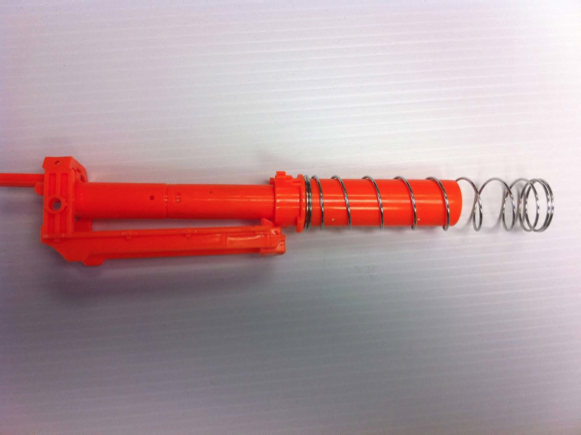
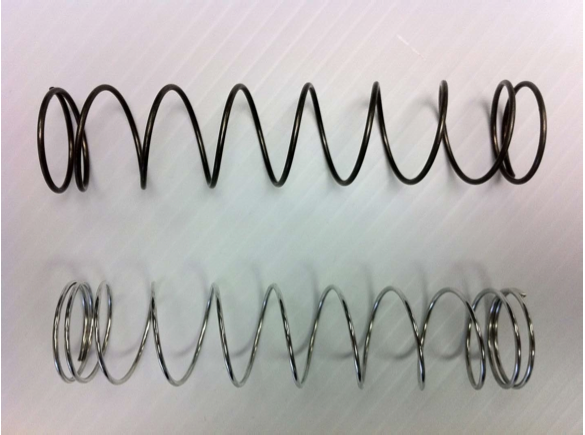
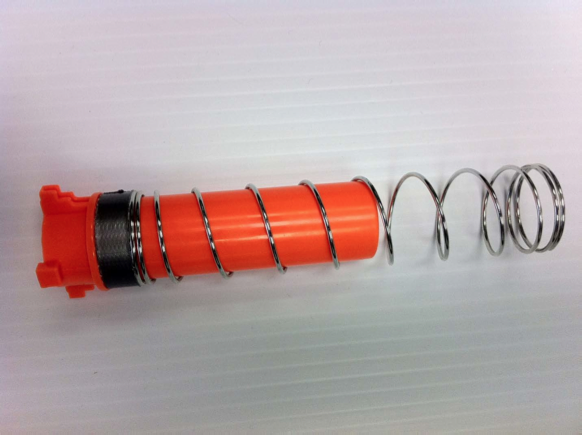
Increasing the tension of the mainspring will give your blaster a small power boost by taking up the slack that is normally present. By swapping the mainspring with a more powerful one, you can easily double the power of your blaster. However, over time, powerful springs will increase the wear on the blaster.
Supplies Needed:
• (Method 1): Aftermarket spring
• (Method 2): Duct tape or electrical tape
Step 1: Remove bolt sled, spring, and plunger from the blaster. (Pic. 1)
Step 2: (Method 1): Install aftermarket spring. The aftermarket spring pictured above is made out of slightly thicker wire. The compression of the stock spring is measured at around 2.5 kg, and the aftermarket spring is measured at over 5 kg. The spring swap alone will add about 30 feet more distance to your shots and can be found in the Orange Mod Works Stage 1 performance kit. (Pic. 2)
(Method 2): Create a 1 centimeter wide buffer out of tape by wrapping it around the outside of the plunger where the spring would rest normally. Make the tape layer thick enough to hold the spring in place, but not thicker than the plunger lip. Be careful not to make the strip of tape too wide, because you will not be able to cock the plunger back if it is. This mod gives you a boost in spring tension without having to stretch out the spring. Stretching the spring causes irreversible damage to the spring and will decrease its performance after only a few shots. (Pic. 3)
Supplies Needed:
• (Method 1): Aftermarket spring
• (Method 2): Duct tape or electrical tape
Step 1: Remove bolt sled, spring, and plunger from the blaster. (Pic. 1)
Step 2: (Method 1): Install aftermarket spring. The aftermarket spring pictured above is made out of slightly thicker wire. The compression of the stock spring is measured at around 2.5 kg, and the aftermarket spring is measured at over 5 kg. The spring swap alone will add about 30 feet more distance to your shots and can be found in the Orange Mod Works Stage 1 performance kit. (Pic. 2)
(Method 2): Create a 1 centimeter wide buffer out of tape by wrapping it around the outside of the plunger where the spring would rest normally. Make the tape layer thick enough to hold the spring in place, but not thicker than the plunger lip. Be careful not to make the strip of tape too wide, because you will not be able to cock the plunger back if it is. This mod gives you a boost in spring tension without having to stretch out the spring. Stretching the spring causes irreversible damage to the spring and will decrease its performance after only a few shots. (Pic. 3)
Chapter 7: Breech Modification
WARNING: This part is for Intermediate Nerf Modders Only. Only attempt this if you are VERY confident in you modding skills. Once you start this mod, there is no going back!
This modification gives you the advantage of utilizing precision brass parts while preserving the blaster's original function. It is a more advanced mod and requires you to destroy some of the original stock parts. Again, once you start this mod, there is no going back!
Supplies Needed:
• 9/16 brass tubing
• 17/32 brass tubing
• Dremel Tool
• Conical grinding bit
• Reinforced cutting wheel
• Metal file
• Sand paper
• Hack saw
• Permanent marker
• Epoxy
• Glue
This Step Is Under Construction And Is Therefore Unavailable. I am sorry for the inconvenience.
I will try to get it up as soon as I can.
This modification gives you the advantage of utilizing precision brass parts while preserving the blaster's original function. It is a more advanced mod and requires you to destroy some of the original stock parts. Again, once you start this mod, there is no going back!
Supplies Needed:
• 9/16 brass tubing
• 17/32 brass tubing
• Dremel Tool
• Conical grinding bit
• Reinforced cutting wheel
• Metal file
• Sand paper
• Hack saw
• Permanent marker
• Epoxy
• Glue
This Step Is Under Construction And Is Therefore Unavailable. I am sorry for the inconvenience.
I will try to get it up as soon as I can.
FInished!! :-)

Congratulations! You have finished modifying your NERF Recon CS-6
Enjoy!!! :-D
Enjoy!!! :-D